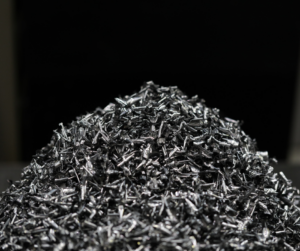 The most profitable manufacturers make as many products with as few resources as possible. So strategic cost savings is important. One way for manufacturers to save is to rein in waste at their facilities. But waste is much more than just scrap materials that pile up on shop floors.
The most profitable manufacturers make as many products with as few resources as possible. So strategic cost savings is important. One way for manufacturers to save is to rein in waste at their facilities. But waste is much more than just scrap materials that pile up on shop floors.
Operate More Efficiently
Preventive maintenance, routine physical inspections and effective quality control are the keys to operational efficiency. For example, do you conduct ongoing maintenance on equipment? Doing so can ensure that each machine is properly calibrated and running smoothly. Maintenance schedules can prevent breakdowns that slow productivity and may be costly to repair.
Another part of preventive maintenance is replacing equipment on a regular basis. No machine lasts forever. New equipment can help speed up production, minimize defects and lower energy costs.
Besides preventive maintenance, other ways to help reduce waste include:
Managing inventory. Consider ordering only the materials needed for production for a specific period. This will require you to review past years’ sales data to estimate how much you need to produce.
Scheduling walkthroughs. On the first workday of each month, walk the plant floor and observe the production process. Look for such issues as how much time machines and employees sit idle and whether workflow seems to be organized. Examine the flow of materials. Revising the flow to be more linear and moving raw materials closer to the production line are simple ways to minimize idle time and transport.
Updating workspaces. Pay attention to whether locations are clearly delineated. You may occasionally need to update signage or repaint lines on the floor to help employees function more efficiently. Likewise, look for broken, dusty or expired inventory items. Slow-moving inventory is a waste of working capital.
Determining defect causes. Always look for the underlying causes of quality issues and fix them. For example, link defects to a specific employee (who may simply need better training) or a machine (that may need to be repaired or replaced).
Reusing or recycling when possible. To illustrate: You may reuse rinse water in the cooling system. Or metal scrap can be melted and returned to raw materials — or sold to a recycling yard — rather than thrown in the trash.
Tracking waste. Most manufacturers already track energy and water use at their facilities. Tracking waste isn’t so different. Start by creating a team — including representatives from all levels of your company — that gathers and analyzes waste-related data and implements waste-reduction goals. The team should then monitor the waste-reduction progress and report back to employees. You can promote the goals to employees and even offer monetary incentives or noncash awards for achievements.
Conducting a professional waste audit. Every manufacturer needs quality inspections to detect waste and prevent defects from reoccurring. It may make sense to hire a professional to conduct a waste audit. The auditor can help review your waste streams and provide guidance on ways to reduce waste. Consider conducting the audit just after your year-end inventory count: You’ll have your inventory organized and can see where you may have waste.
Time for a Fresh Start
Excess scrap can lead to safety issues, cleanup costs and diminished profit margins. However, in a manufacturing context, waste extends beyond trash. Now may be the time to look for fresh perspectives on waste reduction and ways to boost your bottom line. Contact us to learn more.
© 2023







